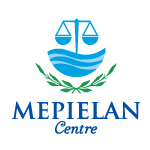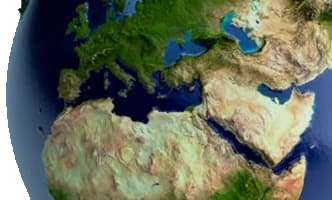On the 19th January 2013 delegates representing 140 countries at a United Nations forum in Geneva have managed to clinch a deal to establish a new global treaty regime governing mercury pollution. Negotiators had agreed during the 25th Session of the UNEP Governing Council/Global Ministerial Environment Forum (GC/GMEF), held in February 2009, to complete a legally binding instrument by February 2013. During the 13-19 January negotiations, delegates faced the challenge of reaching a common ground on decisions regarding the scope and the content of the agreement. This treaty is the result of a four year of negotiating process on the subject.
Specifically, four sessions of Intergovernmental Negotiation Committee (INC) took place before the international community reach to a consensus about a binding legal text. The previous session (INC 4) that was held from 27 June to 2 July 2012 in Punta del Este, Uruguay covered broad areas, ranging from products that contain mercury and processes that use mercury, to supply and trade of mercury, to emissions and releases, to storage and waste, to financial resources and technical assistance, and compliance. Despite progress made in smaller issues like storage, waste and contaminated sites, controversy flared over the core and complex issues of financial resources and technical assistance, implementation and compliance committee and control measures.
The Minamata Convention on Mercury – named after the Japanese town whose residents suffered the consequences of mercury poisoning some 50 years ago –achieved to resolve the aforementioned controversies and opens for signature at the Diplomatic Conference to be held from 7 to 11 October 2013 in Japan.
The Minamata Convention keeps under control the usage of mercury* by targeting several products for phase-out by 2020. Those products include mercury thermometers, certain blood pressure measuring devices, most batteries, certain types of electric switches, some fluorescent lamps, and certain soaps and cosmetics. Exceptions have been allowed for some medical products for which a mercury-free alternative does not exist.
One of the most important issues to be resolved during the negotiation process was concerning the scope and the content of the treaty and particular whether the provisions of the agreement would have a “positive list” (listing only prohibited uses) or a “negative list” (banning all uses and listing exceptions to the ban). Finally, delegates agreed to use the positive list approach with regard to processes, and a hybrid approach with regard to products. The treaty therefore commits parties to a phase-out for a number of products that use mercury by 2020.
One of the most complicated aspects of the treaty was the trade of mercury. The delegates agreed on a system of prior informed consent rather than a ban. In this context, an issue that was extensively negotiated was how to treat trade in mercury products between parties and non-parties to the treaty. In the end, the treaty effectively treats trade between party members and non-party members equally.
While many welcomed the treaty, some groups felt that the language used was too vague on some industries, such as gold mining and coal-fired plants, the largest mercury sources. According to Article 9 of the treaty, each country that has Artisanal and small-scale gold mining (ASGM) within its territory shall take steps to reduce and where feasible eliminate the use of mercury. In addition, each party shall notify the Secretariat if at any time ASGM processing “is more than insignificant,” and if it determines it to be so, they must develop a National Action Plan. Critics argue that this language leaves the door open to proceed with business as usual.
Mercury treaty introduced the concept of controlled use of heavy metals by establishing a legal framework for the environmentally sound usage of mercury which may cause damage to public health.
The convention will enter into force once it has been ratified by at least 50 countries, a process that could take three to four years. A swift ratification of the Minimata Convention and its proper entry into force is a precondition for adequately evaluating its effectiveness in protecting the environment and public health.
Note:
* Mercury is a naturally-occurring chemical; however, there is no level of exposure considered safe for humans. There are two principle types of mercury exposure, each presenting a different level of danger to humans: elemental mercury and methylmecury. Methylmecury, however, is a type of organic mercury that builds up in fish and shellfish. Overexposure to this form through the consumption of seafood is especially dangerous to a developing foetus, causing neurological problems and deformities. Adults can also be affected with these disorders but require a higher level of exposure. Also Mercury is a common heavy metal found in a number of daily used products such as energy-saving light bulbs but it is also released through a number of processes, including mining and cement and coal-fired power industries.
Source: UNEP News Centre, IISD Reporting Services
For Further Information:
http://www.unep.org/hazardoussubstances/News/PressRelease/tabid/425/language/en-US/Default.aspx?DocumentID=2691&ArticleID=9207&Lang=en
http://ictsd.org/downloads/biores/biores8-18.pdf
http://ictsd.org/i/trade-and-sustainable-development-agenda/152952/
About the author

MEPIELAN Centre
MEPIELAN Centre is an international research, training and educational centre established by Professor Evangelos Raftopoulos at the Panteion University of Athens in 2008.
Before its establishment as a University Centre, MEPIELAN operated as a successful international research, training and informational programme (2002-2007) under the scientific direction of Professor Evangelos Raftopoulos and the aegis of the Panteion University of Athens, supported by the Mediterranean Action Plan/UNEP and the Greek Ministry of the Environment, Physical Planning and Public Works.
MEPIELAN Centre is an accredited UNEP/MAP PARTNER (since 2013), a Member of the Mediterranean Commission on Sustainable Development (MCSD) (since 2016), and a Member of the Steering Committee of the MCSD (since 2019).
On 22 May 2022, MEPIELAN Centre proceeded to the development of MEPIELAN as a Non- Profit Civil Organization (INGO) for the more effective and efficient advancement of its Goals and Missions and furtherance of its activities. MEPIELAN Centre as a Non- Profit Civil Organization (INGO) is registered in Greek Law (Hellenic Business Registry, Reg. No. 16477300100) in accordance with Laws 4072/2012 & 4919/2022 as applicable


